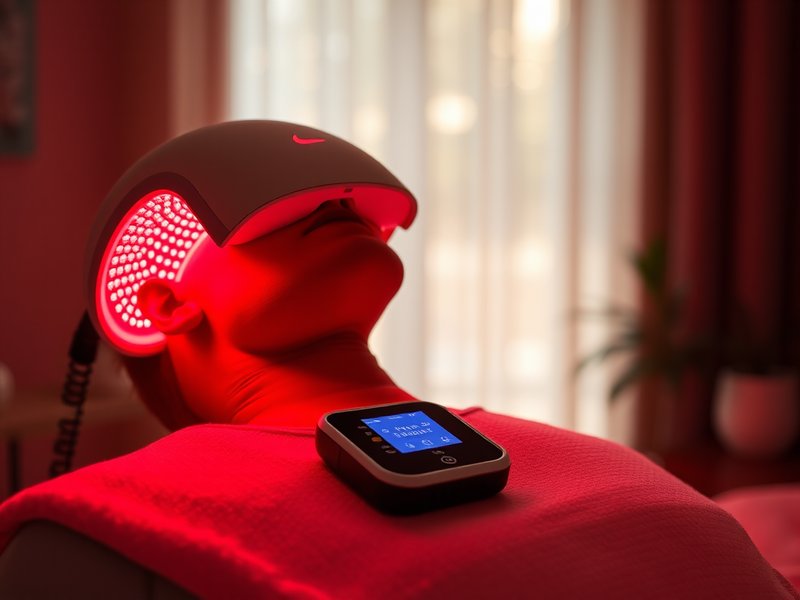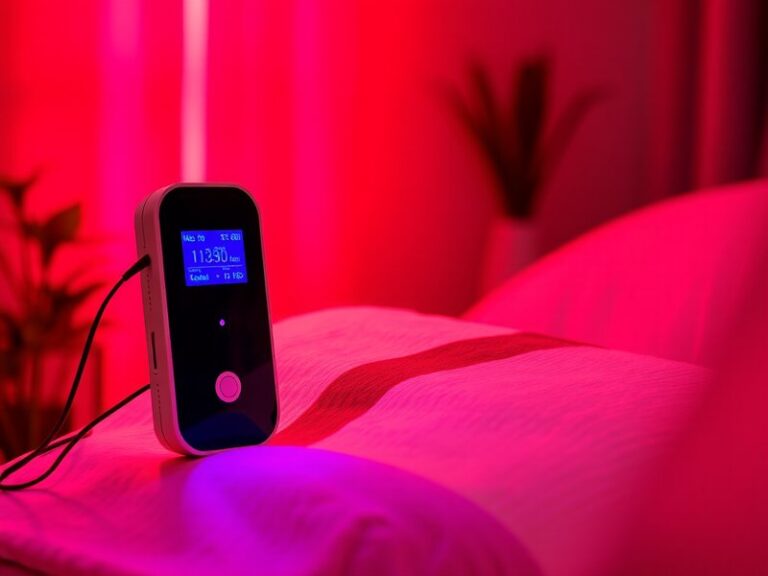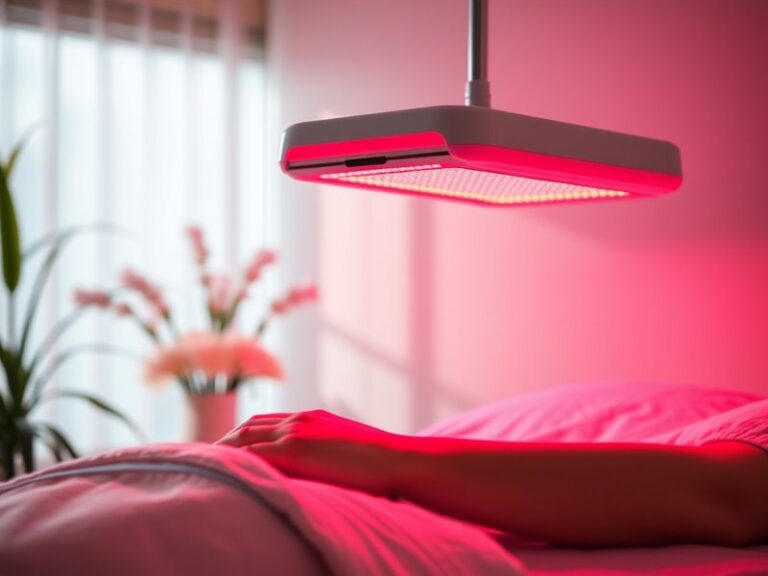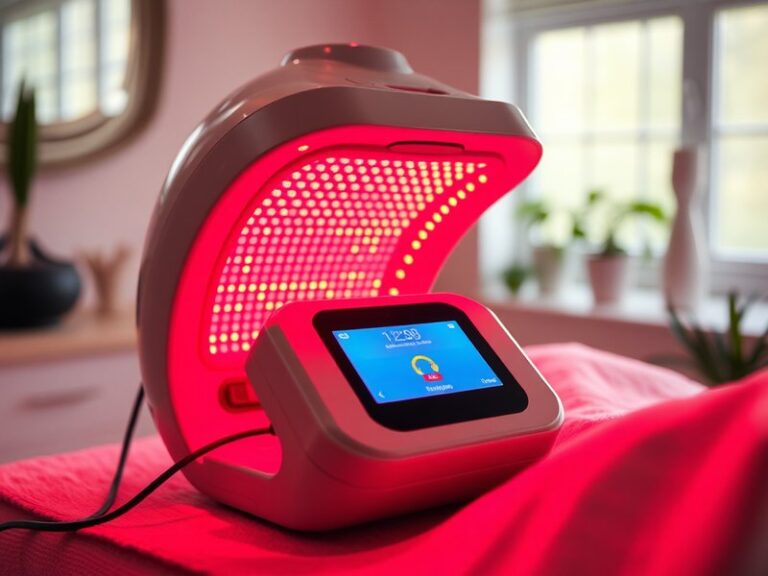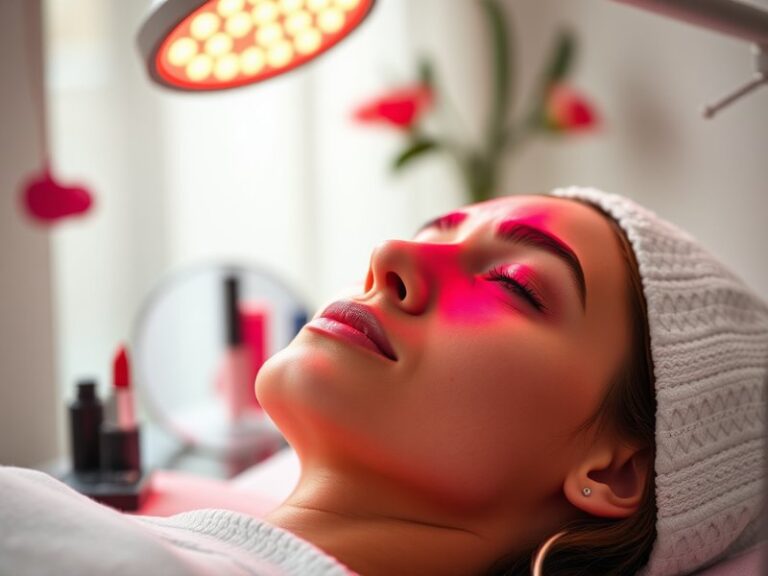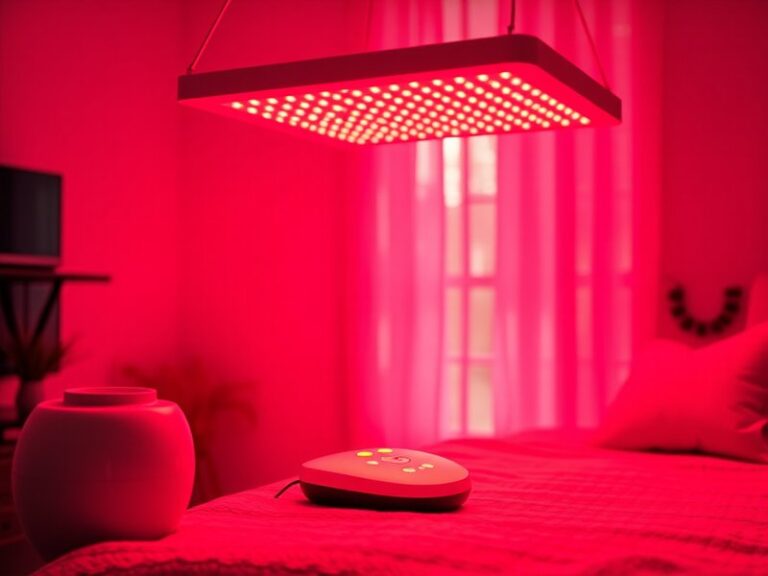Does Red Light Therapy For Pain Work?
Does Red Light Therapy For Pain Work?
Have you ever experienced persistent pain that just won’t go away? If so, you might be exploring various treatment options, one of which is red light therapy.
This article will delve into the efficacy of red light therapy for managing pain, outlining its benefits, considerations, and alternatives. We aim to provide you with a comprehensive understanding of whether this therapy could be an effective solution for your pain management needs.
Key Takeaways
- Red light therapy has been shown in some studies to effectively reduce pain and inflammation.
- The treatment is non-invasive and generally considered safe, with minimal side effects.
- While promising, its effectiveness can vary from person to person and should be considered as part of a broader pain management strategy.
What is Red Light Therapy?
Red light therapy (RLT) is a treatment that uses low-level wavelengths of red light to stimulate healing processes in the body. Originally developed for use in the medical field, RLT has gained traction as a holistic approach in various contexts, including dermatology and pain management.
Discover the full analysis Is Daily Red Light Therapy Safe?
The mechanism behind red light therapy is thought to involve the stimulation of mitochondria, the energy-producing components of cells, which may enhance cellular repair and regeneration. This can lead to reduced inflammation and pain relief, making it an attractive option for those suffering from chronic pain conditions.
What are the Benefits of Red Light Therapy?
Exploring the benefits of red light therapy reveals its multifaceted potential, especially for pain management.
Pain Reduction
Studies have indicated that RLT can significantly reduce pain in conditions such as arthritis, fibromyalgia, and sports injuries. A notable study found that participants receiving RLT reported a marked reduction in pain intensity compared to those receiving a placebo treatment.
Reduced Inflammation
The anti-inflammatory effects of red light therapy can be beneficial for individuals with conditions characterized by inflammation. By promoting blood flow and tissue repair, RLT may help to decrease swelling and accelerate recovery from injuries.
Improved Healing Times
RLT may enhance the healing process following injuries or surgeries. By facilitating cellular repair and regeneration, it has been linked to quicker recovery times, which can be a significant advantage for athletes or individuals undergoing rehabilitation.
Mood Enhancement
Emerging evidence suggests that RLT may have mood-enhancing effects, potentially alleviating some psychological symptoms associated with chronic pain, such as depression and anxiety. This holistic benefit underscores the therapy’s broad spectrum of potential applications.
See the complete post Does Red Light Therapy Benefit Skin?
Is it Possible to Use Red Light Therapy for Pain Management?
Red light therapy is not only feasible but is increasingly being utilized in various clinical settings for pain management. Many health professionals and wellness centers now offer RLT as part of their treatment protocols.
What are the Advantages of Using Red Light Therapy?
Red light therapy offers several significant advantages.
Non-Invasive Treatment
RLT is a non-invasive method, meaning it does not involve surgery or injections. This makes it an appealing option for individuals seeking pain relief without the risks associated with more invasive procedures.
Minimal Side Effects
Compared to many traditional pain medications, RLT presents minimal side effects. Most users report nothing more than warmth or a mild sensation during treatment sessions.
Accessibility and Ease of Use
With advancements in technology, RLT devices are becoming more accessible for personal use at home, allowing individuals to manage their pain conveniently.
What are the Disadvantages of Using Red Light Therapy?
While there are advantages, certain disadvantages should also be considered before commencing red light therapy.
Varied Results
The efficacy of RLT can vary greatly between individuals and pain conditions, with some experiencing significant relief while others see little to no improvement. This inconsistency can lead to frustration for users.
Cost Considerations
Depending on where you receive treatment, cost can be a factor. While some at-home devices are affordable, professional treatments can add up, especially if multiple sessions are required.
Limited Scientific Consensus
Despite promising findings, the scientific community has yet to reach a unified consensus regarding the effectiveness of RLT for all pain conditions. More extensive research is needed to solidify its efficacy across various ailments.
What are the Things to Consider Before Starting Red Light Therapy?
Before diving into red light therapy, there are important factors to keep in mind.
Consultation with a Healthcare Provider
Before starting RLT, it’s essential to consult with a healthcare professional, particularly if you’re already on medication or have existing health conditions. They can provide personalized advice on whether RLT is suitable for you.
Understanding Treatment Protocols
Familiarize yourself with the recommended treatment protocols, including duration and frequency of sessions. Each condition may require different approaches for optimal results.
Setting Realistic Expectations
While some users may experience quick relief, it’s crucial to set realistic expectations regarding the timeframe for results. Patience may be needed as your body responds to the therapy.
What are the Alternatives to Red Light Therapy?
If red light therapy doesn’t resonate with you, several effective alternatives can help manage pain.
Physical Therapy
Physical therapy involves exercises and modalities aimed at improving mobility and reducing pain, targeted under the supervision of a licensed professional. It has a wealth of research backing its effectiveness.
Acupuncture
This ancient Chinese practice uses needles at specific body points to alleviate pain. Many individuals report satisfactory results and find acupuncture beneficial for various ailments.
Medication
Over-the-counter and prescription medications can provide significant relief for many. However, these should be approached cautiously due to potential side effects and dependency risks.
Conclusion: Is it Recommended to Use Red Light Therapy for Pain?
In summary, red light therapy presents a promising option for pain management, boasting benefits like pain reduction, decreased inflammation, and improved healing times. However, results can vary, and it should ideally be used as part of a comprehensive pain management strategy that includes consultation with medical professionals and consideration of alternative therapies. Overall, while red light therapy may not be a one-size-fits-all solution, it offers a viable non-invasive treatment option for those seeking to alleviate pain.
Frequently Asked Questions
How long does it take to feel results from red light therapy?
Results can vary based on individual conditions, but many report feeling effects within a few sessions. For chronic conditions, it may take longer, so consistent treatment is key.
Is red light therapy safe for everyone?
While generally considered safe, individuals with certain medical conditions, such as light sensitivity or specific skin conditions, should consult healthcare providers to determine suitability.
How often should I undergo red light therapy?
Typically, sessions are recommended 2-3 times per week, but this can vary based on personal needs and the severity of the condition. Consultation with a professional can provide tailored recommendations.
Are there any home devices for red light therapy?
Yes, several at-home RLT devices are available. However, ensure they are from reputable manufacturers and that you understand the device’s guidelines for use.
Can red light therapy be used alongside other treatments?
Yes, RLT can be used in conjunction with other treatments like physical therapy, acupuncture, or medications, but it’s always best to discuss this with your healthcare provider.
